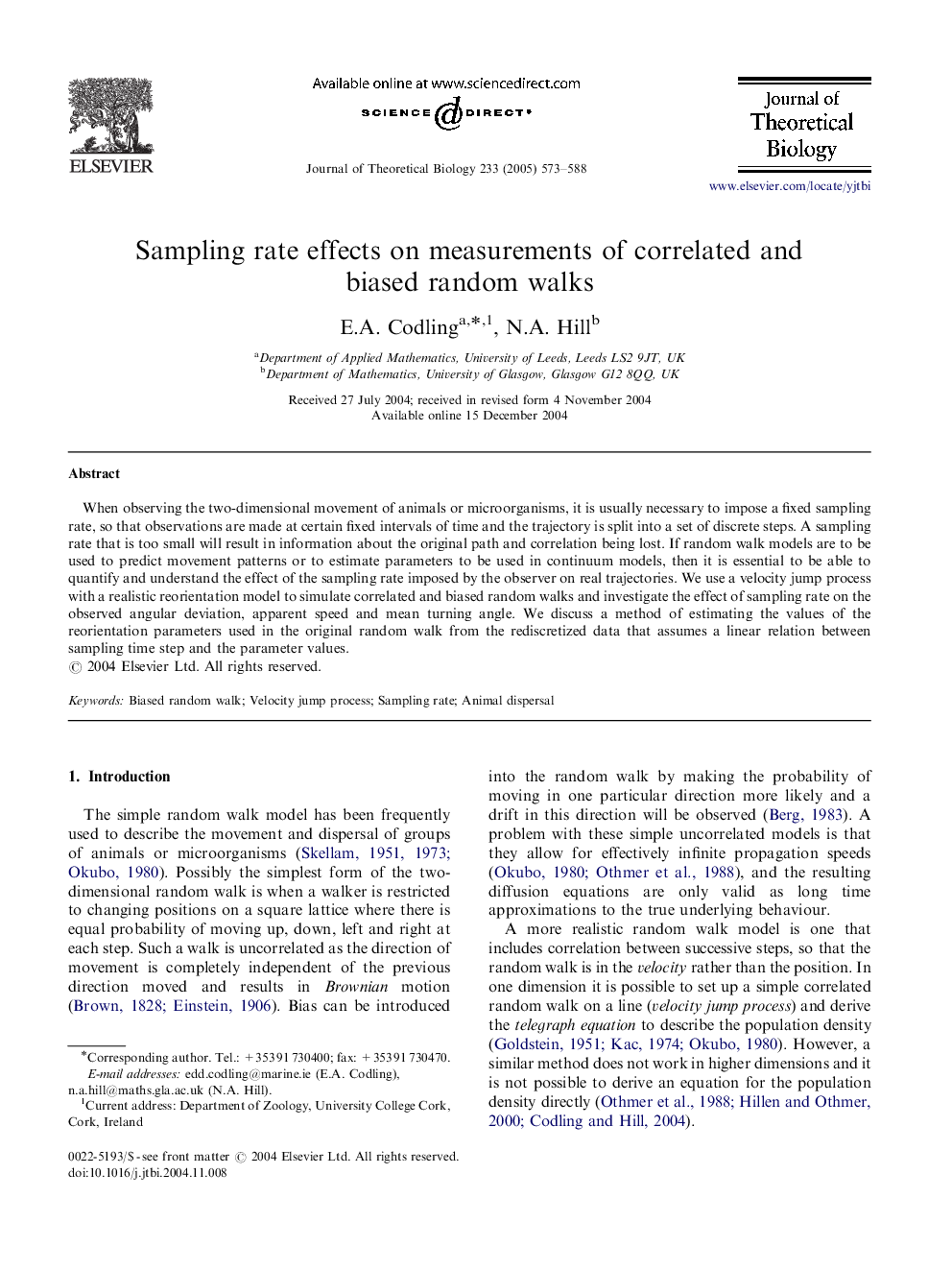| Article ID | Journal | Published Year | Pages | File Type |
|---|---|---|---|---|
| 9469883 | Journal of Theoretical Biology | 2005 | 16 Pages |
Abstract
When observing the two-dimensional movement of animals or microorganisms, it is usually necessary to impose a fixed sampling rate, so that observations are made at certain fixed intervals of time and the trajectory is split into a set of discrete steps. A sampling rate that is too small will result in information about the original path and correlation being lost. If random walk models are to be used to predict movement patterns or to estimate parameters to be used in continuum models, then it is essential to be able to quantify and understand the effect of the sampling rate imposed by the observer on real trajectories. We use a velocity jump process with a realistic reorientation model to simulate correlated and biased random walks and investigate the effect of sampling rate on the observed angular deviation, apparent speed and mean turning angle. We discuss a method of estimating the values of the reorientation parameters used in the original random walk from the rediscretized data that assumes a linear relation between sampling time step and the parameter values.
Keywords
Related Topics
Life Sciences
Agricultural and Biological Sciences
Agricultural and Biological Sciences (General)
Authors
E.A. Codling, N.A. Hill,
